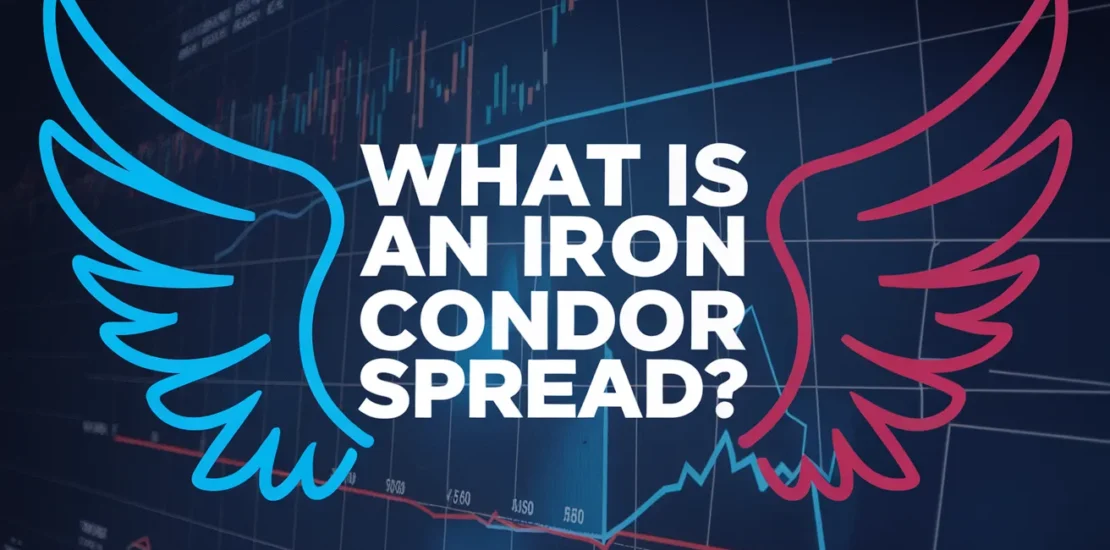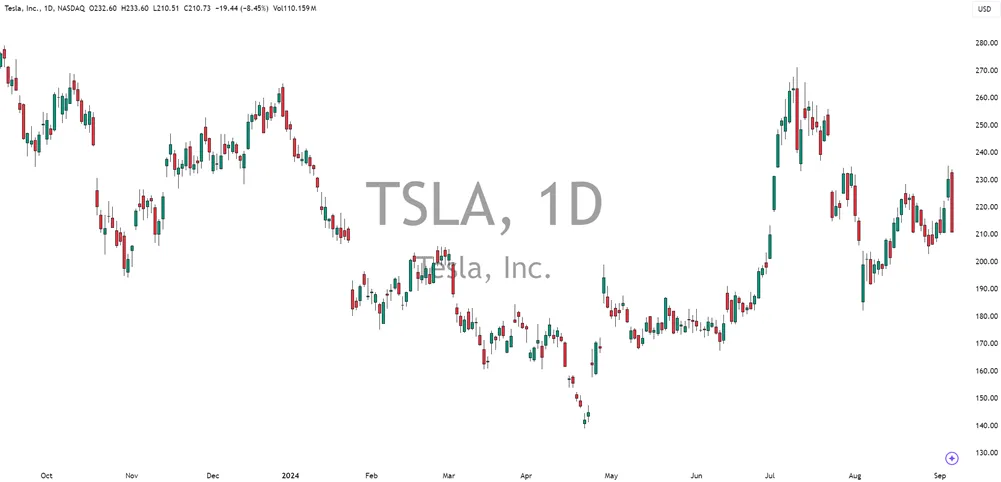- September 6, 2024
- Posted by: Jay Soloff
- Categories: Options Trading, Trading Article

The Iron Condor spread is a cornerstone of options trading, known for its ability to generate steady income with limited risk.
This strategy is favored by traders who anticipate stable market conditions and want to capitalize on the time decay of options premiums.
In other words – An Iron Condor trade is best when you think the underlying stock is not going to move much!
In this comprehensive guide, we will explore:
- What an Iron Condor spread is,
- How an Iron Condor spread works,
- When to use an Iron Condor spread, and
- How to manage an Iron Condor spread effectively.
By the end of this article, you’ll understand the Iron Condor spread and how it can be a valuable tool in your trading arsenal.
Let’s look at the basics…
Unlock the Secret to Easy Wins with Iron Condors – The Top 10 Stocks You Need to Trade NOW! DOWNLOAD HERE.
What Is an Iron Condor Spread?
Let me start by saying – this article is for traders who understand the basics of Options.
I’m going to assume you know what a Put option is… a Call option, an options premium, and a strike price, amongst other things. If you are not familiar with the basics of options trading, you can check out some great educational articles here.
Trading professionals think of an Iron Condor spread as a non-directional options strategy that is primarily used when traders expect the price of an underlying asset to remain within a specific range over a set period, typically until the options’ expiration date.
It’s a fancy way of saying that you use an Iron Condor Spread when you expect the underlying stock to not move.
An Iron Condor Spread involves four distinct options contracts: two calls and two puts, strategically placed at different strike prices.
Here’s how the trades are placed:
First, you sell a lower strike put, which is typically placed closer to the current market price of the underlying stock.
This short put creates income for the trade but exposes you to downside risk.
To offset this risk, an even lower strike put is purchased. This provides a safety net in the event of significant downward movement in the stock price.
You’ve just created a trade called a “bull put spread.”
On the other side of the trade, a higher strike call is sold, typically positioned just above the current market price.
Similar to the short put, this call generates income but exposes you to risk if the stock price moves sharply upward.
To limit this risk, an even higher strike call is purchased, providing protection.
Together, these call positions form a “bear call spread.”
The Iron Condor is essentially a combination of two vertical spreads: a bull put spread and a bear call spread.
The result is a trade that shows maximum profits when the underlying stock remains within the range between the strike prices of the short put and the short call.
Now you see why the Iron Condor is best suited for low-volatility or range-bound markets, where large price movements are not anticipated.
What’s great is the strategy provides traders with the potential to generate consistent returns while clearly defining both the maximum profit and the maximum loss.
How an Iron Condor Spread Works
Understanding how the Iron Condor spread operates is essential for effectively executing and managing this options strategy.
At its core, the Iron Condor allows traders to collect premiums from selling options, while simultaneously limiting potential risk through the purchase of protective options.
This balance of premium collection and risk limitation is what makes the strategy both attractive and relatively safe for traders.
The income generated in an Iron Condor trade comes from the premiums collected by selling the short call and short put options. These options are positioned closer to the current market price of the underlying asset – thereby capturing the biggest premiums.
Remember our goal is to have all the options expire worthless… so you get to keep the full amount of the premiums collected.
Built into every Iron Condor Spread is insurance.
The long options provide built-in protection from large unexpected moves in the underlying stock. These long options act as safeguards, limiting your potential losses.
In this way, the Iron Condor becomes a defined-risk strategy. You’ll know both the maximum profit and maximum loss from the trade, at the outset.
The maximum profit in an Iron Condor is captured when, at expiration, the underlying stock price remains between the strike prices of the short call and short put options.
Both short options expire worthless, and you keep the full premium collected from setting up the trade.
Now you see why traders love Iron Condors in range-bound markets.
Maximum Loss
On the flip side, the maximum loss occurs if the price of the underlying asset moves beyond the strike prices of the long call or long put options.
In other words, if the underlying stock price jumps or falls beyond your protective options… you’ll see the worst-case scenario.
If this happens, the short options will be exercised, and you’ll need to fulfill the obligations of the contract. You’ll see the protective long options kick in to limit the damage. The loss is confined to the difference between the strike prices of the short and long options, minus the net premium initially received.
Let me say that again… the maximum loss is the difference between your long and short options contracts, less the premium received.
So if the spread between the long and short options is $5, or $500 per contract, and you received $2.20, or $220 in premium, your max loss is $280.
=> $500 less $220 equals $280.
This is where trading an iron condor generates income while keeping strict risk controls.
When to Use an Iron Condor Spread
I’ve mentioned it several times already…
The Iron Condor spread works best when you DO NOT expect the underlying stock to move much.
In trader’s terms: Iron condors are best when volatility is low!
Some traders also look at market patterns and focus on securities showing tendencies to be range-bound.
Ideally, as a trader, you’re looking for periods where you don’t expect any major announcements or news.
So, don’t be setting up Iron Condor Spreads a few days before the Fed is going to speak. And don’t be placing these trades right before a company is going to make an earnings announcement.
Remember this trade is for when times are quiet and volatility is LOW!
This leads to the biggest reason Iron Condor Trades are used:
INCOME GENERATION
Iron Condors allow you to generate steady income, by collecting options premium. At the outset of the trade, you’ll see a credit in your account. The cash you get to pocket on day ONE!
Since the risk and reward are clear from the outset, you can rely on the Iron Condor Spread as a method to collect income, knowing your exposure to large market movements is limited. This makes the strategy particularly appealing for conservative traders who want a steady return without the risk of significant losses.
By carefully assessing market conditions and identifying periods of low volatility and range-bound behavior… You’ll be able to generate a steady income while maintaining a controlled level of risk.
Managing an Iron Condor Spread
You’ve placed the Iron Condor Spread trade… “Now What?”
Successfully managing an Iron Condor spread is as critical as setting it up. If market conditions change, you need to be able to roll with the tide!
The most important thing to keep a close eye on is volatility.
As I mentioned, the Iron Condors strategy thrives in low-volatility environments. If market volatility increases, you risk the underlying security breaking through the strike prices of the short options, leading to potential losses.
When this happens, it’s essential to assess whether adjusting your position or closing the trade early is the best course of action.
Adjustments might include rolling the options to different strike prices or expiration dates, depending on the market’s behavior.
If the asset’s price approaches one of your short strike prices, consider rolling the options to a new strike price or extending the expiration date to buy yourself more time.
These adjustments allow you to manage risk and potentially salvage the trade by repositioning your options in a way that better aligns with the new market conditions.
FYI, Rolling Options is a whole other topic that requires some strategy, so I won’t cover it here.
You also need to keep an eye on time decay.
As the options approach expiration, their value decays, allowing you to profit from the diminishing value of the short options. Time decay works in your favor, especially if the underlying asset’s price remains within the designated strike range.
You might consider closing your position early if you’ve already captured the majority of the premium. Exiting early helps you lock in profits while avoiding potential losses from sudden, unexpected market movements.
Now let’s look at a real trade!
A Real-World Example of an Iron Condor Spread
Let’s assume you think Tesla (TSLA) is going to see volatility fall… Maybe they just announced earnings and you expect the stock to stay steady.

With the stock at $212.50 a share, currently.
The first thing you do is sell a call option with a $215 strike and simultaneously buy a call option with a strike of $220. This credit spread will give you a credit of $2.20 or $220 per contract.
NOTE: You can select long or short-dated expirations based on how long you think the underlying stock will be stable.
That trade is one side of the Iron Condor.
Then you do the same type of trade… but with put options.
You want to sell a put option with a strike of $210 and buy a put option with a strike of $205. Your credit will be about $2.20 on this trade… or about $220 per contract.
These are the parts of the trade:
=> Buy-to-open: $220 call
=> Sell-to-open: $215 call
=> Sell-to-open: $210 put
=> Buy-to-open: $205 put
In total, you’ll put $440 in your pocket.
| Trade Type | Action | Option Type | Strike Price | Credit Received | Contract Value |
|---|---|---|---|---|---|
| 1 | Sell a Call Option | Call | $215 | $2.20 | $220 |
| 2 | Buy a Call Option | Call | $220 | – | – |
| Credit Spread (Calls) | Total Credit | $2.20 | $220 | ||
| 3 | Sell a Put Option | Put | $210 | $2.20 | $220 |
| 4 | Buy a Put Option | Put | $205 | – | – |
| Credit Spread (Puts) | Total Credit | $2.20 | $220 |
The spread between your long and short options is $5 or $500. So $500 less the $440 in premium received shows your maximum loss to be $0.60, or $60 per contract.
In a few weeks, if TSLA is still trading between $210 and $215… your options will expire worthless, and you’ll pocket the premium of $440
Now you see a real example of how the Iron Condor strategy might be used to generate income. Remember, you’ll know from the start what your max profit and max loss might be!
Best Practices for Trading Iron Condor Spreads
To get the most out of the Iron Condor strategy, follow these best practices…
First, choose the right underlying assets. When selecting assets for an Iron Condor spread, it’s best to focus on highly liquid assets (so bids are tight) with low to moderate volatility.
Second, set realistic expectations for your trades. The Iron Condor is a strategy designed to generate steady, consistent income rather than huge windfalls. Success with this strategy comes from stacking small, reliable returns over time.
Third, it’s critical to avoid over-leveraging. One of the common mistakes traders make is using too much leverage. Just because the trade has limited risk does NOT mean you can take on larger positions. Watch your position sizing.
Fourth, always monitor your positions. Although Iron Condors are relatively passive strategies, they still require attention, especially as expiration approaches, or as the underlying stock moves. Set alerts on your trades and keep an eye out for any adjustments you might need to make.
Follow these best practices and you’ll maximize the profits from Iron Condor Trades.
How to Learn More About Iron Condors?
There are millions of nuances to trading Iron condors.
For example, reviewing the underlying stock, and developing a solid projection of its volatility can be critical.
Get this right, and you print money… get this wrong and you’ll see loss after loss.
I want to give you a leg up on Iron Condor trades. I’ve assembled a list of my 10 favorite stocks to trade Iron condors. It’s a great place to start if you’re looking for consistent income with limited risk.

